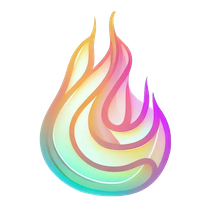The Quantum Technician 18-11-2025
quantum applications, post-quantum cryptography, theory foundations
🔬 Quantum Hardware & Applications
Field Notes from EQTC 2025 (slow-thoughts.com). Europe pioneers quantum tech, balancing sovereignty, funding, and collaboration while profiling leaders like Marie Bjerre and Henna Virkkunen
A new quantum toolkit for optimization (research.google). Google Quantum AI unveils Decoded Quantum Interferometry (DQI) for optimization, linking decoding algorithms and polynomial-related problems using quantum interference
A Visit to the Israeli Quantum Computing Center (IQCC) (gilkalai.wordpress.com). Visit to IQCC near Tel Aviv University; discussion of mission, dilutions refrigerators with 19- and 21-qubit chips, and boson sampler
Optimal scaling for magic state distillation in quantum computing achieved (phys.org). Phys.org reports constant-overhead magic state distillation for qubits using algebraic geometry codes, led by Adam Wills (MIT) and colleagues, Nature Physics 2025
The road to useful quantum computing applications (blog.google). Five-stage framework maps path from quantum ideas to real-world applications, detailing discovery, problem instances, real-world advantage, engineering, and deployment
🔐 Post-Quantum Cryptography
Post Quantum Cryptography in Sequoia PGP (sequoia-pgp.org). Sequoia PGP adopts post-quantum cryptography in Rust, OpenPGP RFC9580, ML-DSA/ML-KEM with Ed25519 backends, via OpenSSL, led by Neal H. Walfield and Red Hat collaboration
How we avoided side-channels in our new post-quantum Go cryptography libraries (blog.trailofbits.com). Trail of Bits releases ML-DSA and SLH-DSA in pure Go, detailing constant-time protections against side channels and divisions
How do I securely send you a present when bad guys are intercepting our mail? (colinpaice.blog). Security concepts illustrated through padlocks, multi-recipient encryption, and homomorphic techniques for protecting mail and data
On-chip cryptographic protocol lets quantum computers self-verify results amid hardware noise (phys.org). On-chip cryptographic verification enables self-checking quantum computations amid hardware noise on a 52-qubit ion-trap graph state
🧠 Theory & Foundations
Linklog | Visual Information Theory (colah.github.io). Visual explanations of probability, entropy, cross-entropy, KL divergence, mutual information, and prefix codes with Bob–Alice examples in a visually driven approach
New Experiment Explains Why We Don't See Quantum Effects Everywhere (backreaction.blogspot.com). New experiment sheds light on why quantum effects aren’t observable everywhere, touching on foundations, experiments, and implications
Approximating arbitrary complex-valued continuous functions (lesswrong.com). Complex-valued function approximation via uniform algebras, density operators, and tensor construction in functional analysis
📚 Academic Research
A Compilation Framework for Quantum Circuits with Mid-Circuit Measurement Error Awareness (arxiv:cs). MERA is an MCM-error-aware compiler improving qubit mapping, routing, and scheduling, boosting dynamic-circuit fidelity over Qiskit and QR-Map. Practical for Qiskit users needing reliable mid-circuit measurements
Provably Efficient Quantum Algorithms for Solving Nonlinear Differential Equations Using Multiple Bosonic Modes Coupled with Qubits (arxiv:cs). Presents an analog continuous-variable algorithm encoding fields as coherent states to solve nonlinear PDEs with provable efficiency. Relevant for bosonic hardware seeking quantum advantage in scientific simulations
Lore: An LWE-based Key Encapsulation Mechanism with Variable Modulus and CRT Compression (eprint.iacr.org). Proposes Lore, an MLWR-based IND-CCA2 KEM using variable modulus and CRT compression, proven secure in ROM/QROM. Important for post-quantum cryptography standards and practical implementations
A measurement-driven quantum algorithm for SAT: Performance guarantees via spectral gaps and measurement parallelization (arxiv:cs). Analyzes a measurement-driven quantum SAT solver, relating runtime to spectral gap and measurement success, and introduces parallelization and readout improvements. Potentially surpasses Grover quadratic limits for special instances
Cycle Basis Algorithms for Reducing Maximum Edge Participation (arxiv:cs). Introduces load-aware heuristics to build cycle bases with reduced maximum edge participation, improving lattice-surgery overheads for fault-tolerant quantum gates. Valuable for hardware teams optimizing error-correction resources
